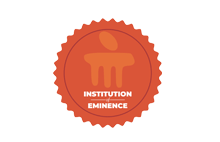Prevalence of poststroke fatigue and its relationship with clinical characteristics among community-dwelling stroke survivors: A cross-sectional survey
Document Type
Article
Publication Title
Clinical Epidemiology and Global Health
Abstract
Background and objective: Poststroke fatigue is widely overlooked due to a lack of awareness, definite cause, and cure. It is influenced by cultural variance in psychosocial factors and stroke epidemiology patterns across different countries. To date, the prevalence of poststroke fatigue has not been determined in the Indian setting. Hence our objective was to estimate the prevalence of fatigue among community-living late subacute and chronic stroke survivors. Additionally, we determined the association between poststroke fatigue and participants’ clinical and demographic data. Methods: A cross-sectional survey was conducted among first-time stroke survivors following discharge from two tertiary care hospitals. Medical records were screened and included if they met the criteria for age >18 years, able to follow a two-step command with no existing neurological or systemic conditions that would influence fatigue scores. Telephonic consent was obtained, and an interview was conducted to obtain the scores for fatigue, daytime sleepiness, depression, functional mobility, and disability. Results: A total of 323 participants (mean age: 60.3 ± 12.6 years, mean stroke duration: 8.6 ± 4.4 months) completed the interview. Poststroke fatigue was reported in 11.8 % (n = 38) of the population. Occupational status (χ2 = 5.73), functional mobility (χ2 = 5.84), and disability scores (χ2 = 8.00) were significantly associated (p < 0.05) with fatigue scores. Individuals with disability exhibited five times (OR = 5.00, CI: 1.45–17.23, p = 0.01) higher odds of experiencing fatigue than those without disability. Conclusion: Our study reported a relatively lower prevalence of fatigue among community-living late subacute and chronic stroke survivors. Implementing strategies to address these contributing factors could effectively ease fatigue in individuals recovering from stroke.
DOI
10.1016/j.cegh.2024.101812
Publication Date
11-1-2024
Recommended Citation
Jagadish, Akhila; Natarajan, Manikandan; Guddattu, Vasudeva; and Solomon, John M., "Prevalence of poststroke fatigue and its relationship with clinical characteristics among community-dwelling stroke survivors: A cross-sectional survey" (2024). Open Access archive. 9886.
https://impressions.manipal.edu/open-access-archive/9886


